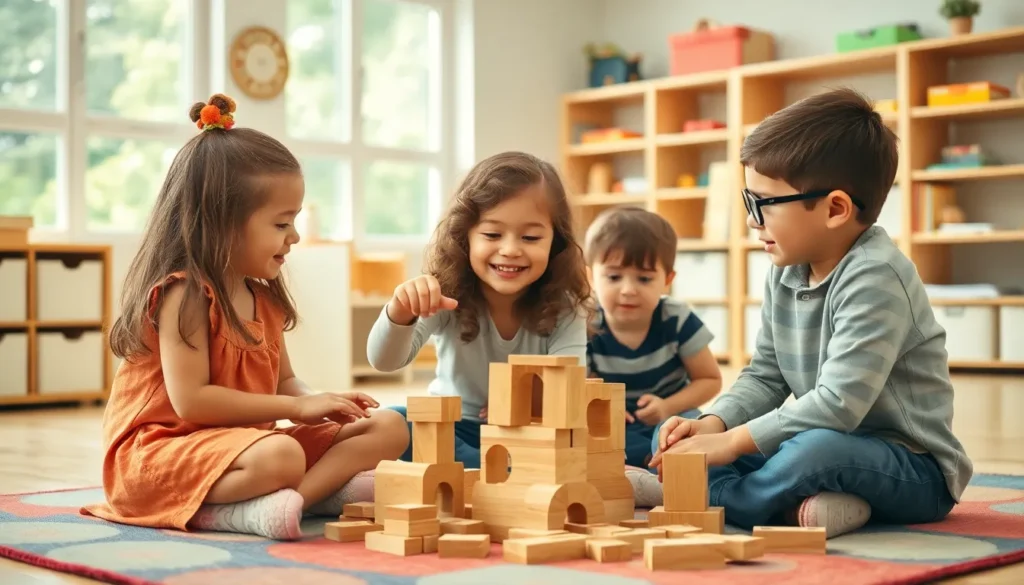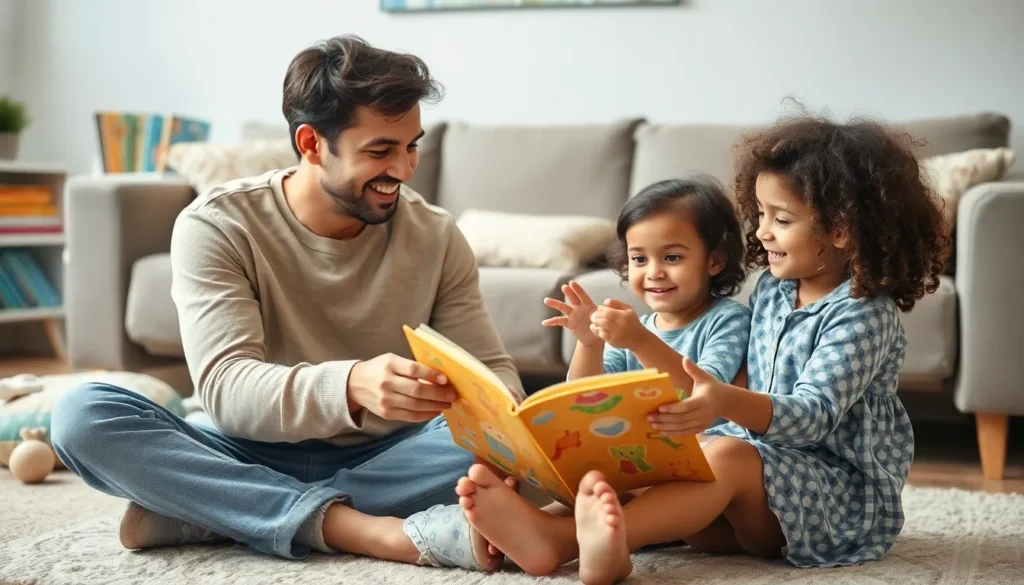Table of Contents
ToggleIn today’s world, blended families are as common as mismatched socks. With parents remarrying and kids shuffling between households, the dynamics can feel like a never-ending sitcom. But don’t worry; it’s not all chaos and confusion. Blended families bring together a delightful mix of personalities, creating a unique tapestry of love and laughter.
Understanding Blended Families
Blended families form when one or both partners in a relationship bring children from previous unions into their new family structure. This dynamic creates a diverse environment filled with varying backgrounds.
Definition of Blended Families
A blended family consists of two parents and their children from previous relationships. Included in this category are step-siblings, half-siblings, and other family members that often converge under one roof. In the U.S., nearly 50% of marriages involve at least one partner with children from prior relationships. These family units strive to create a cohesive home while navigating the unique challenges associated with multiple parental roles and histories.
Common Types of Blended Families
Blended families come in several forms. First, a simple blended family includes one step-parent and one biological parent with children from previous relationships. Next, a complex blended family contains two partners and children from multiple prior unions. Additionally, families may include half-siblings, where one parent shares a child with a partner while also having children with another partner. Each type brings its distinct dynamics, requiring open communication and adaptation among family members.
Challenges Faced by Blended Families


Blended families encounter various challenges that require attention and understanding.
Navigating Relationships
Different family dynamics exist within blended families. Members often face complex relationships with one another, as step-parents and biological parents must find their roles. Communication plays a crucial role in developing trust and respect. Family members engage in discussions to address conflicts and clarify expectations. Trust-building activities can help strengthen these relationships. Balancing time between step-siblings and biological siblings demands careful planning. Prioritizing one-on-one interactions fosters individual bonds, improving the overall family atmosphere.
Addressing Emotional Issues
Emotional turbulence frequently arises in blended families. Feelings of jealousy, abandonment, and loyalty conflicts may surface among children adjusting to new family structures. Recognizing these emotions allows families to address them openly. Professional counseling provides guidance and support for navigating these feelings. Creating a stable environment fosters security and encourages open expression of emotions. Regular family meetings can serve as platforms for discussing challenges and expressing support for one another. Validating each family member’s feelings helps in building resilience and harmony within the family unit.
Benefits of Blended Families
Blended families offer a range of advantages, enriching the lives of all members through unique experiences and opportunities.
Unique Family Dynamics
Varied backgrounds and experiences shape the dynamics of blended families. Children learn to adapt by embracing new relationships with step-siblings and step-parents. This adaptability fosters resilience, encouraging individuals to navigate diverse perspectives. Humor often emerges from these interactions, promoting strong bonds among family members. With nearly 50% of marriages involving partners with children from previous relationships, it’s common to find families integrating multiple cultures and traditions. Unique family dynamics create an environment where empathy and flexibility thrive, leading to interconnectedness among all family members.
Opportunities for Growth
Blended families present numerous opportunities for emotional and personal growth. Children develop conflict-resolution skills through interactions with their step-siblings and parents. Engaging in open discussions encourages them to articulate their feelings and resolve conflicts, enhancing their communication abilities. Mentorship often occurs as older siblings guide younger ones, enriching experiences and fostering responsibility. Supportive relationships with step-parents can provide role models, contributing to overall development. Blended families cultivate emotional intelligence, allowing members to navigate challenges effectively and build deeper connections within the family unit.
Strategies for Success in Blended Families
Blended families thrive on understanding and adaptability. Implementing effective strategies strengthens family bonds and nurtures a positive environment.
Effective Communication
Active listening remains crucial in blended families. Family members express their feelings, promoting trust and reducing misunderstandings. Encouraging open discussions about expectations helps clarify roles among parents and children, easing tensions. Utilizing regular family meetings can provide a structured way to address issues, while informal conversations foster a relaxed atmosphere for sharing concerns. Encouraging children to voice their thoughts allows them to feel valued, reducing jealousy or loyalty conflicts. Conflict resolution skills often develop as families work through challenges together, laying the foundation for a supportive environment.
Building Family Traditions
Creating shared family traditions bonds blended families. Regular activities such as game nights or weekly outings promote interaction and unity. Celebrating holidays and birthdays together fosters a sense of belonging among step-siblings and half-siblings, strengthening relationships. Involving everyone in the decision-making process empowers children and encourages their investment in family life. Additionally, incorporating elements from different family backgrounds broadens cultural experiences, enriching family dynamics. Establishing rituals, like a family dinner each week, becomes a cherished time that everyone looks forward to, reinforcing commitment and love within the family unit.







